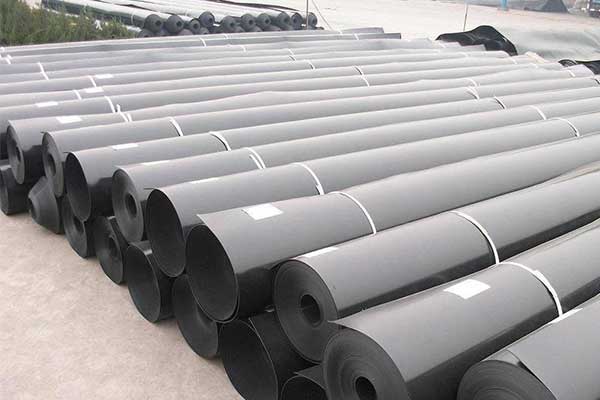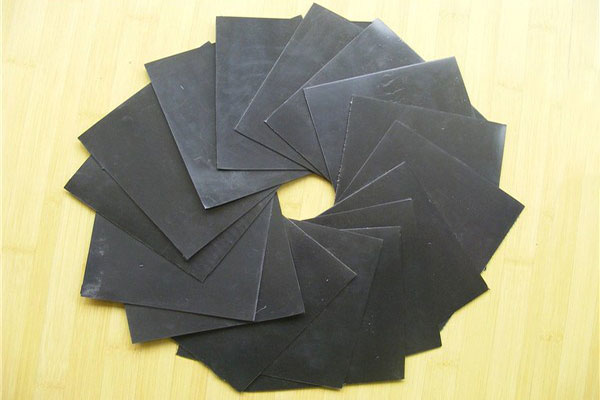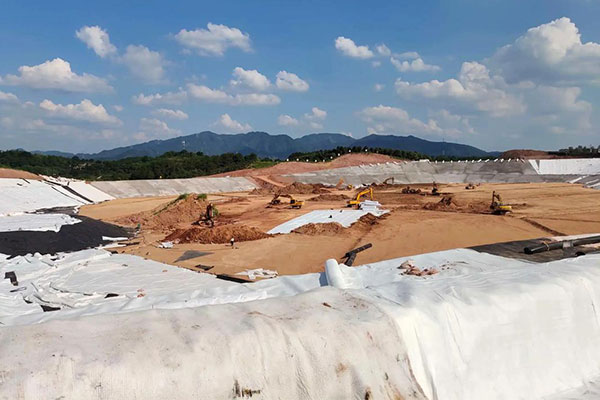HDPE vs. PVC Geomembrane: What’s the Difference
Geomembranes are essential components in modern engineering and environmental protection, widely used in applications such as waste containment, water storage, and mining. Among the most popular geomembrane materials are HDPE (High-Density Polyethylene) and PVC (Polyvinyl Chloride). While both are used for similar purposes, they differ significantly in material properties, applications, and advantages. Understanding these differences can help in selecting the right material for your specific project needs.

What is HDPE Geomembrane?
HDPE geomembranes are made from high-density polyethylene resin. They are known for their exceptional durability, chemical resistance, and long lifespan. HDPE is highly effective in preventing the migration of liquids or gases in a wide range of environmental and industrial applications.
Key Features of HDPE Geomembrane:
- High Chemical Resistance: Suitable for applications involving hazardous substances, such as in landfill liners or chemical storage.
- UV Resistance: Excellent for outdoor use as it resists degradation from sunlight exposure.
- Durability: HDPE can last for decades, even in harsh conditions.
- Rigid Material: It is less flexible but very strong, making it suitable for large projects.
Common Applications of HDPE Geomembrane:
- Landfill liners and caps
- Mining containment systems
- Canal linings
- Wastewater treatment facilities

What is PVC Geomembrane?
PVC geomembranes are made from polyvinyl chloride, a flexible and versatile material. They are often used in applications where flexibility and ease of installation are critical.
Key Features of PVC Geomembrane:
- High Flexibility: Easily conforms to uneven surfaces, making it ideal for projects with complex geometries.
- Ease of Installation: PVC is lightweight and can be seamed with adhesives, simplifying installation.
- Moderate Chemical Resistance: Suitable for many applications, though not as resistant as HDPE in aggressive environments.
- Low UV Resistance: Typically requires protection when used outdoors.
Common Applications of PVC Geomembrane:
- Pond liners
- Water reservoirs
- Secondary containment systems
- Decorative landscaping

Key Differences Between HDPE and PVC Geomembrane
| Feature | HDPE Geomembrane | PVC Geomembrane |
|---|---|---|
| Material Composition | High-density polyethylene | Polyvinyl chloride |
| Flexibility | Low | High |
| UV Resistance | Excellent | Moderate to low |
| Chemical Resistance | Superior | Good |
| Installation | Requires welding | Easy, with adhesive options |
| Cost | Higher initial cost | Lower initial cost |
| Typical Lifespan | 20–50+ years | 10–20 years (depending on conditions) |
Which Geomembrane Should You Choose?
The choice between HDPE and PVC geomembrane depends on the specific requirements of your project:
- Choose HDPE if durability, chemical resistance, and long-term performance are critical. It’s the go-to material for projects like landfills, industrial waste containment, and mining.
- Choose PVC for applications requiring flexibility, ease of installation, or shorter-term solutions. It’s ideal for small ponds, decorative features, and lightweight containment systems.
Conclusion
Both HDPE and PVC geomembranes have unique advantages and limitations. By carefully considering your project’s specific needs—such as environmental conditions, expected lifespan, and budget—you can select the right geomembrane to ensure long-term success.
For more insights into geomembrane selection or to explore high-quality geomembrane products, feel free to contact us today!
